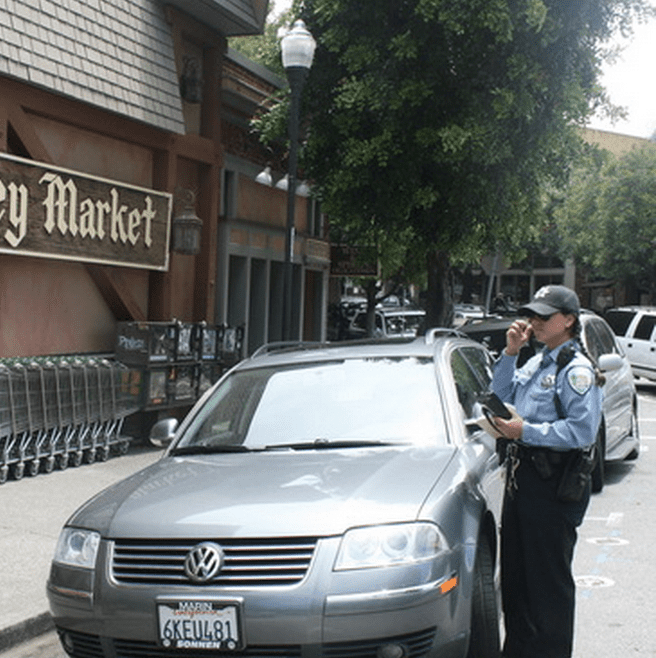
One of the few bright spots of the pandemic has been the ability to get a parking spot in Mill Valley on any day of the week, at any time of day, without fail.
But that’s not exactly to the benefit of the Mill Valley Police Department’s budget, which is built on parking-related revenues and has been facing “a budget deficit that is not sustainable,” says Police Chief Rick Navarro. “The desired outcome is to stabilize revenue. We want to be cost neutral.”
Navarro asked the Mill Valley City Council this week for a series of infrastructure upgrades that would increase revenue, stimulate parking turnover and provide more options for residents and guests to pay for parking. The council approved each of his requests:
• Upgrade the IPS Group’s smart meters’ network from 2G to 4G.
• Add Near Field Communication technology that allows customers to add money to their meter via smartphone.
• Increase street parking meter rates to $2.50 per hour and offer a lower $1.50 per hour rate in parking lots like the large lot behind the commercial buildings on Miller Avenue between Sunnyside and Throckmorton avenues, in an effort to increase turnover in high priority areas and encourage longer-term, off-street parking with variable rates. “We support parking rates that would push parking to less used areas like the one behind D’Angelo’s,” Hunter Moore, board chair of the Mill Valley Chamber, told the council.
• Increase parking citation fines across an array of types of violations. For instance, increase the fine for an expired meter from $28 to $40.
• Increase the RSVP permit program rates to $50 for the first two vehicles and $67 for the third and fourth vehicles, and step that up to $75 in 2023.
• Increase the residential parking permit stickers to $30.
Lastly, the council authorized the purchase of Automated License Plate Recognition system, which will allow the department to glean critical data around who parks where, why and when, and thus be able in the future to change certain parking designations in response to usage patterns.
The council declined, at least for now, to authorize annual increases to those aforementioned rates based on the Consumer Price Index, as councilmembers preferred to have the ALPR, and the data it gleans on parking usage through city limits, dictate possible rate hikes in the future. Navarro indicated that 3-6 months would be enough time for the department garner enough data.

To paraphrase an old Broadway musical: “How to kill business without really trying!”
That being said, there’re always empty parking spaces available on East Blythdale and Throckmorton, in good times and in bad. Any perceived lack of parking space turnover is purely imaginary on the part of the Mill Valley PD, with complicity from The Town Council.
The Mill Valley PD is an employee benefit scheme disguised as a police department. Parking enforcement revenues should NOT provide the major source of revenue to ANY police department, ANYWHERE. The police, and their salaries, employee benefits, disability insurance, training, and retirement plans, should be paid for from city funds, in turn derived from property taxes paid by homeowners. NOT from issuing parking tickets, which are just a business tax in disguise
Fine cars parked for over the allowed time on mill valley streets even where there is no mater. There are cars taking very limited shared neighborhood parking for weeks, months. Right now we have to bother the sheriff. Fines would work.